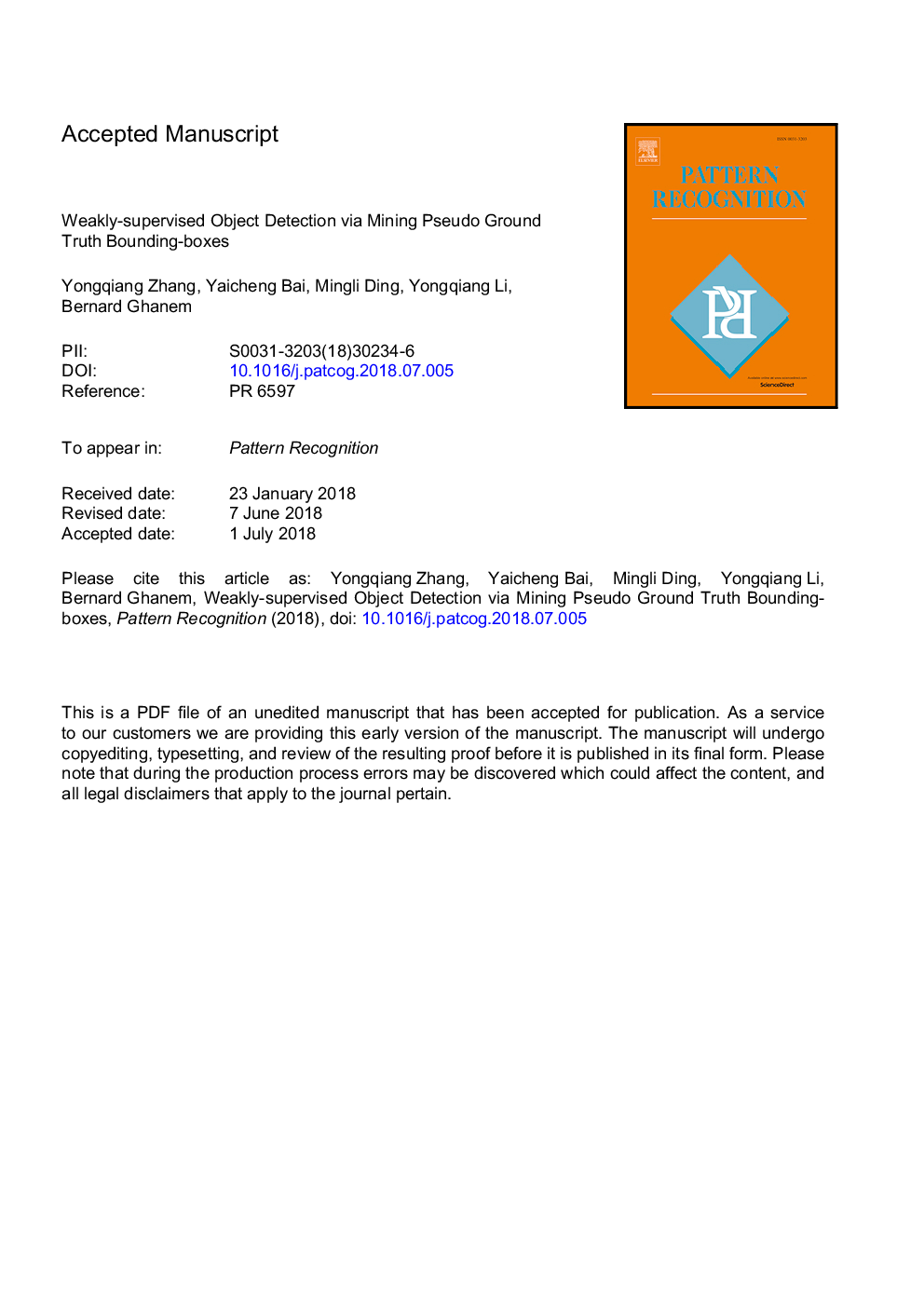| Article ID | Journal | Published Year | Pages | File Type |
|---|---|---|---|---|
| 6938651 | Pattern Recognition | 2018 | 38 Pages |
Abstract
Recently, weakly-supervised object detection has attracted much attention, since it does not require expensive bounding-box annotations while training the network. Although significant progress has also been made, there is still a large gap on the performance between weakly-supervised and fully-supervised object detection. To mitigate this gap, some works try to use the pseudo ground truths generated by a weakly-supervised detector to train a supervised detector. However, such approaches incline to find the most representative parts instead of the whole body of an object, and only seek one ground truth bounding-box per class even though many same-class instances exist in an image. To address these issues, we propose a weakly-supervised to fully-supervised framework (W2F), where a weakly-supervised detector is implemented using multiple instance learning. And then, we propose a pseudo ground-truth excavation (PGE) algorithm to find the accurate pseudo ground truth bounding-box for each instance. Moreover, the pseudo ground-truth adaptation (PGA) algorithm is designed to further refine those pseudo ground truths mined by PGE algorithm. Finally, the mined pseudo ground truths are used as supervision to train a fully-supervised detector. Additionally, we also propose an iterative ground-truth learning (IGL) approach, which enhances the quality of the pseudo ground truths by using the predictions of the fully-supervised detector iteratively. Extensive experiments on the challenging PASCAL VOC 2007 and 2012 benchmarks strongly demonstrate the effectiveness of our method. We obtain 53.1% and 49.4% mAP on VOC2007 and VOC2012 respectively, which is a significant improvement over previous state-of-the-art methods.
Related Topics
Physical Sciences and Engineering
Computer Science
Computer Vision and Pattern Recognition
Authors
Yongqiang Zhang, Yaicheng Bai, Mingli Ding, Yongqiang Li, Bernard Ghanem,
